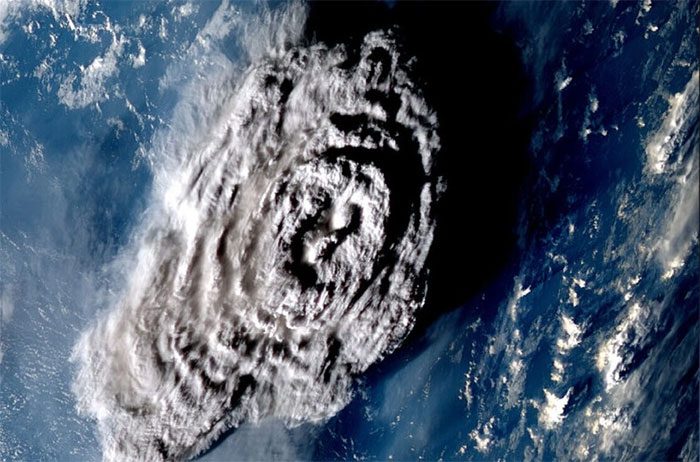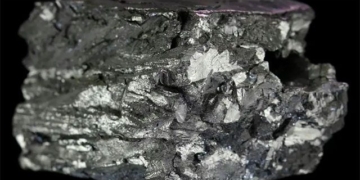When the Hunga Tonga-Hunga Ha’apai volcano erupted underwater in January, it created a plume of ash and steam that reached heights surpassing the third layer of Earth’s atmosphere.
A detailed study of the eruption was published on November 3 in the journal Science. This eruption produced the highest smoke column ever recorded, reaching the mesosphere, where meteors typically break apart and ignite as they enter Earth’s atmosphere, according to CNN.

Satellite images show the plume of ash and steam released into the atmosphere 100 minutes after the eruption of Hunga Tonga-Hunga Ha’apai began. (Photo: Simon Proud/Oxford University, RALSpace NCEO).
The eruption created a “tower of ash and cloud reaching 57 km in just 30 minutes”, stated Dr. Simon Proud, the lead co-author of the study.
The amount of water released into the atmosphere by the volcano is expected to temporarily warm the planet. The heat from the eruption caused water to evaporate and “generated a steam explosion much more powerful than a typical volcanic eruption,” he added.
The mesosphere, located about 50-80 km above Earth’s surface, lies above the troposphere and stratosphere and below two other layers.
The peak of the material column from the eruption reached a maximum height of 57 km, surpassing previous records such as the 1991 eruption of Mount Pinatubo in the Philippines, which had a smoke column reaching 40 km, and the 1982 eruption of El Chichón in Mexico, which reached 31 km.
Researchers used images captured by satellites passing over the eruption site to confirm the height of the smoke column. The eruption occurred on January 15 in the South Pacific off the coast of the Tongan Islands, an area covered by three geostationary weather satellites.
According to earlier findings from a NASA satellite, the amount of water in the ash plume released into the upper layers of the atmosphere was enough to fill 58,000 Olympic-sized swimming pools.

















































